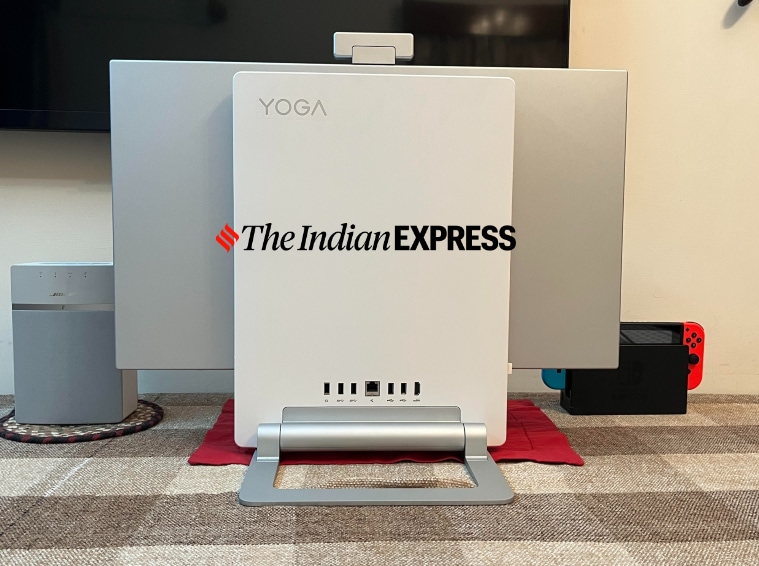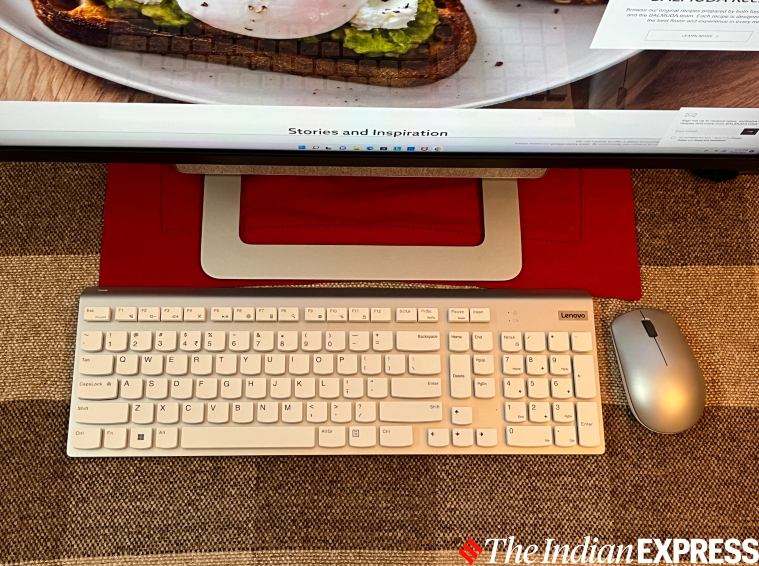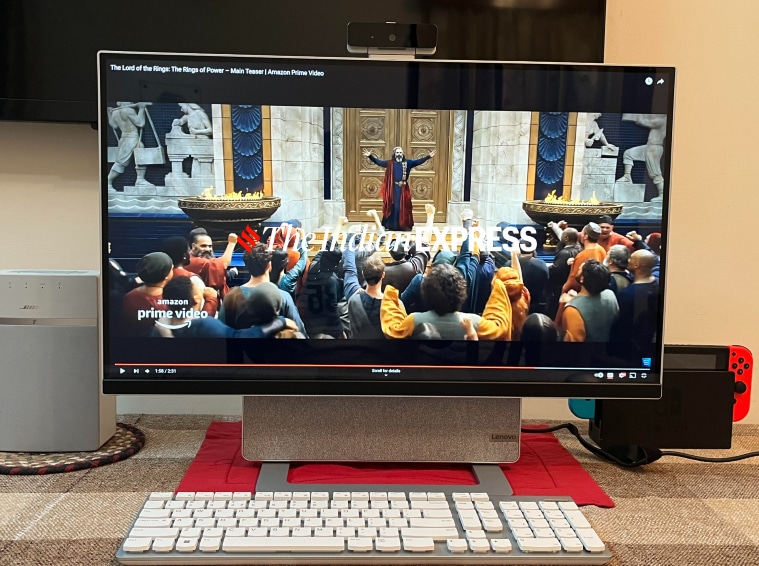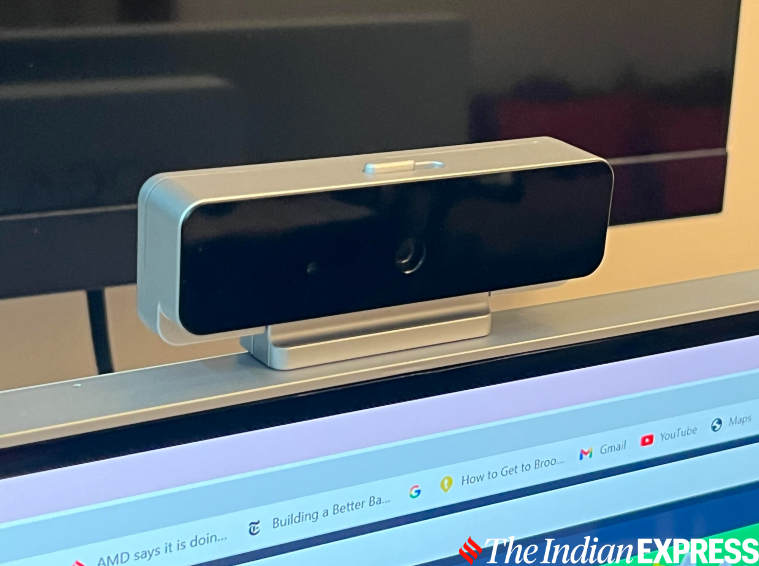The other week, I went to a high-street retailer where I saw an all-in-one desktop computer kept in the extreme corner. I wondered if we even care about a desktop computer anymore, at least from the point of view of average users. Maybe I was thinking too much but I do believe that many people still envision a desktop computer as utterly boring with back-and-silver boxes and monitors (I recently offloaded an HP Pavilion desktop that I got as a gift when I passed the 10th standard) that are a nightmare to fit in compact apartments. But I was pleasantly surprised to see the Lenovo Yoga AIO 7, which looks less like a desktop and more of a statement piece – a conversation starter and an object of desire. After using the AIO 7 for a few days, I thought I’d share my experience of how this computer fits into my daily work.
Lenovo Yoga AIO 7 price in India (as reviewed): Rs 171,990
How I use a computer at home
Desktop computers have always fascinated me. In fact, I have a collection of vintage computers at home and most of them are desktops. Unlike my iPhone 13 mini or iPad mini 6 which I call ‘invisible’ computing devices, I prefer to use a desktop computer at home. Not only does an all-in-one desktop computer look attractive on my main desk but it is also simple to use. Even my father can use a desktop computer and file income tax returns without taking my help. It’s all about convenience and ease of use, and most importantly, I get less impatient while working on a desktop all day. The thing is, sitting on a laptop for extended hours hurts my back and the screen feels small(ish) for the kind of work I do i.e. constantly monitoring the tech stories being published on indianexpress.com.

The design
The concept of all-in-one desktop computers isn’t new but getting it right is the hardest part. The Yoga AIO 7 trades the traditional bulky PC tower with a modern-looking all-in-one design. The design of the AIO 7 is fresh and not something I have seen with other AIOs.
Lenovo takes a different approach in designing its latest AIO desktop computer, a polar opposite of Apple. Unlike the M1 iMac which is an all-in-one singular device with an integrated screen, the Yoga AIO 7 combines a monitor firmly attached to a unit that houses the processor and speakers below the display.
The reason for this unique design has something to do with the rotating display. I love the fact that the 27-inch 4K display (more on that later) can rotate between horizontal and vertical orientation. The ability to operate the display in two orientations is a clever design choice. I am not sure how many people would want to rotate the screen in portrait mode but I did this extensively.
It’s great to read more lines without having to scroll through a story on the web or do work on MS Excel having to scroll. The fact that the AIO has a touch display is great for scrolling reels or a Facebook feed just like you do it on your smartphone. I think this AIO form factor makes a lot of sense for YouTube creators who shoot vertical videos on their phones and upload them across social media. I should mention that when using the AIO 7 in portrait mode, the content automatically adapts to a 90-degree screen orientation with no need to manually change the settings.

It’s a kind of computer that doubles as an entertainment device and becomes an extension of your personality. The Yoga AIO 7 looks excellent in the living area or in the home office. It’s a premium computer with a mix of metal and plastic construction. It does not take up much space, but moving it from one place to another isn’t recommended. I don’t mean a desktop computer has to be portable, but this thing weighs 13 kg. Anyway, I don’t expect people to move their desktop computers around their homes often but if you have to do it – be careful while lifting this one.
While the rotating mechanism of the display is smooth, you cannot tilt it forward and back. Most ports are on the back portion that holds the display, though some ports are also located to the left side of the device for immediate and easier access. It only has a single USB-C port, which is a shame. I was expecting at least two USB-C ports on a computer as expensive as this machine.

You also get two Bluetooth accessories out of the box: A wireless keyboard and mouse. The keyboard offers full-sized keys for fairly comfortable typing, but the key travel is a bit shallower than I like. The mouse, meanwhile, is comfortable in my hand but feels basic to me. Also included is the power brick with a cord. There’s also a detachable 5-megapixel webcam at the top of the screen with a built-in privacy shutter. Sure, the webcam is better than mediocre cameras I have seen on laptops but it is no match to dedicated web cameras like the Dell UltraSharp 4K camera.
The screen
The 27-inch display has a 4K resolution and supports 99 per cent DCI-P3 and Adobe RGB colour standards. The screen is super crisp, bright and truly beautiful – and yes, it rotates 90-degree and has super thin bezels on the top, left and right sides. When watching the last season of The Bold Type on Amazon Prime Video, the colours pop. Especially when it comes to reading or doing research – and I do a lot of that, the advantage of a display as big and bright as this is clearly visible. The clarity of images I edit every day for my reviews and news articles is usually lost when using a smaller display. That’s where I think a pin-sharp display, especially on a desktop computer, adds value to users like myself.

The other big surprise is the Yoga AIO 7’s speakers which not only sound good but also have a rather premium appearance. They are loud, provide decent bass, and have a good stereo separation. I spent hours streaming music and they are as good as high-quality Bluetooth speakers. If you do want to use headphones, the AIO 7 features an audio jack. It also has built-in Bluetooth connectivity, so you can hook up your favourite pair of headphones.
The performance
The model I got for review had an AMD Ryzen 7 5800H with Radeon Graphics (RX 6600M), 16 GB of RAM, and 1TB of SSD storage. I used this desktop computer for writing, consuming video content, streaming music, checking emails, publishing articles and managing the website, and editing images and videos. Basically, a mix of office tasks and personal use. I don’t do anything fancy on computers, except for doing basic stuff average users do on their machines.

Although I didn’t try playing games on it, I was able to edit images and 4K videos. I am pretty sure this hardware configuration will work well for most people; plus, you can download any necessary software or apps on it that you may need. After all, it runs on a legacy Windows 11 operating system.
The AIO 7 is a well-optimised desktop computer. Fire it up and it boots up in mere seconds, with Microsoft’s slick Windows Hello facial recognition camera logging you straight in.
Let’s be honest; it’s expensive
Lenovo Yoga AIO 7 is a lifestyle PC and its hefty price tag of Rs 171,990 reflects that. But is it worth that price? For me, personally; yes, absolutely. If you have the money, and especially if you like investing in a desktop computer that is good at handling both professional and casual work and has a long lifespan; then it is worth it. You are actually paying for the clean, uncluttered design of the AIO 7 and the display and its rotating mechanism. I don’t however, ever, recommend anyone to spend that much money on a desktop computer. So if you actually can’t afford it, then don’t get it. Or go for a low-end AIO and save up money to buy it.




